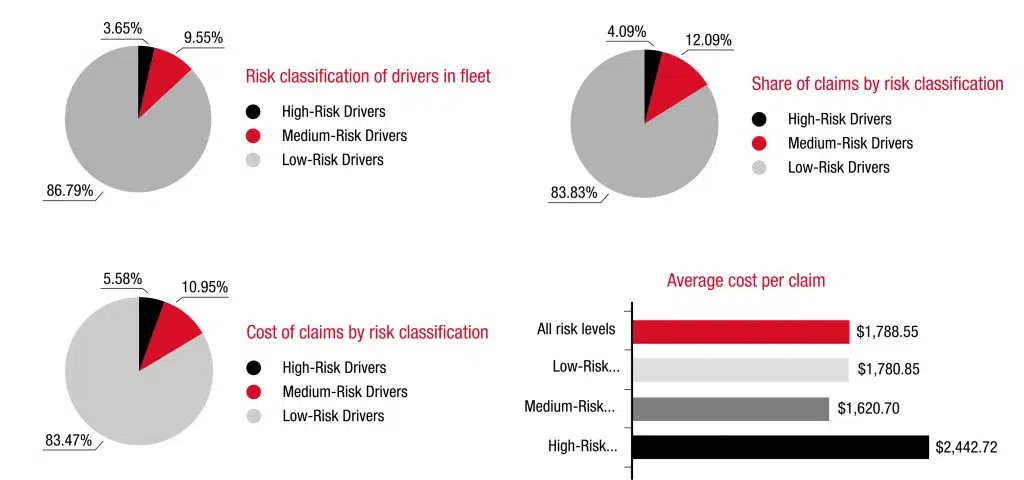22 Oct The High Cost of Low Risk Drivers

If your safety policy only focus on training medium and high-risk drivers, then you’re missing out on targeting most of what is costing your fleet money.
The Big Picture
By the numbers, the biggest risk most companies take occurs on the public roadways. Transportation accidents cause 40 percent of workplace fatalities, according to the Bureau of Labor Statistics – by far the No. 1 cause.
A. 1 in 4 deaths resulted from so-called “roadway incidents” – those occurring on public streets and highways, as opposed to parking lots other off-street locations.
B. Roadway accidents are also the 6th leading cause of lost-time work injuries, according to the National Safety Council.
C. The yearly cost to U.S. employers for non-fatal on-the-job motor vehicle accidents is at least $25 billion, according to the Network of Employers for Traffic Safety (NETS).
The Fleet Snapshot
Many companies address the risk of driving on the job by providing online driving training to their drivers who are classified as high- or medium-risk by MVR scans, claims history and other data.
The following charts are based on the experience of a representative sampling of Fleet Response clients. They look at the actual experience of drivers by risk level – how many claims they’re involved in and how much those claims cost.

What’s notable is how similar the pie charts are.
They Demonstrate
A. High- and medium-risk drivers are more likely to be involved in claims than low-risk drivers, but not by as much as people tend to assume.
B. The vast majority of drivers are classified as low risk. Similarly, the vast majority of claims and claim-related costs involve low-risk drivers.
C. Per the bar chart, there is not a reliable correlation between risk level and the severity of accidents.
D. Even the most successful efforts to reduce accidents among high-and medium-risk drivers will have only a small impact on total claims – while overlooking the ordinary risk for more than 4 out of 5 of your drivers.
Statistically, the best opportunity to manage risk and reduce claims is by including low-risk drivers in every phase of your safety program. [Related article: 5 meaningful safety data points to measure]
The Takeaways
Any time a driver takes to the road, a company assumes a level of risk that something might happen.
“When you send a driver out in a company vehicle, they’re not just driving for you; they’re driving for everyone around them,” says Jerry Veres, CDS, Safety Program Coordinator at Fleet Response. “Maybe you’ve had great safety numbers for the past 10 years, but is that because you’ve been proactive at establishing a culture of safety and care? Or have you just been lucky?”
“Everybody gets tired of hearing how companies get the best results by incorporating driver training as one part of a larger, layered effort,” says Jeff Fender, Fleet Response Vice President of Sales & Marketing. “But when people look at the data, they’re generally surprised at how clearly it indicates the need to train all drivers – even those who’ve been assessed as low risk.
“Safe driving is a learned behavior,” Fender adds. “Every driver has his or her own bad habits. Training brings those habits to the surface, recognizes them and encourages efforts to change them – which takes repetition and ongoing attention.”
“You can’t measure the cost of accidents you don’t have,” Veres says. “But at the fraction of the cost for one serious accident, you can provide what your people need to reduce risk – for themselves and the company.”
For a thoughtful evaluation of your safety program, contact Jeff Fender, Vice President of Sales and Marketing at Fleet Response, contact@fleetresponse.com.

